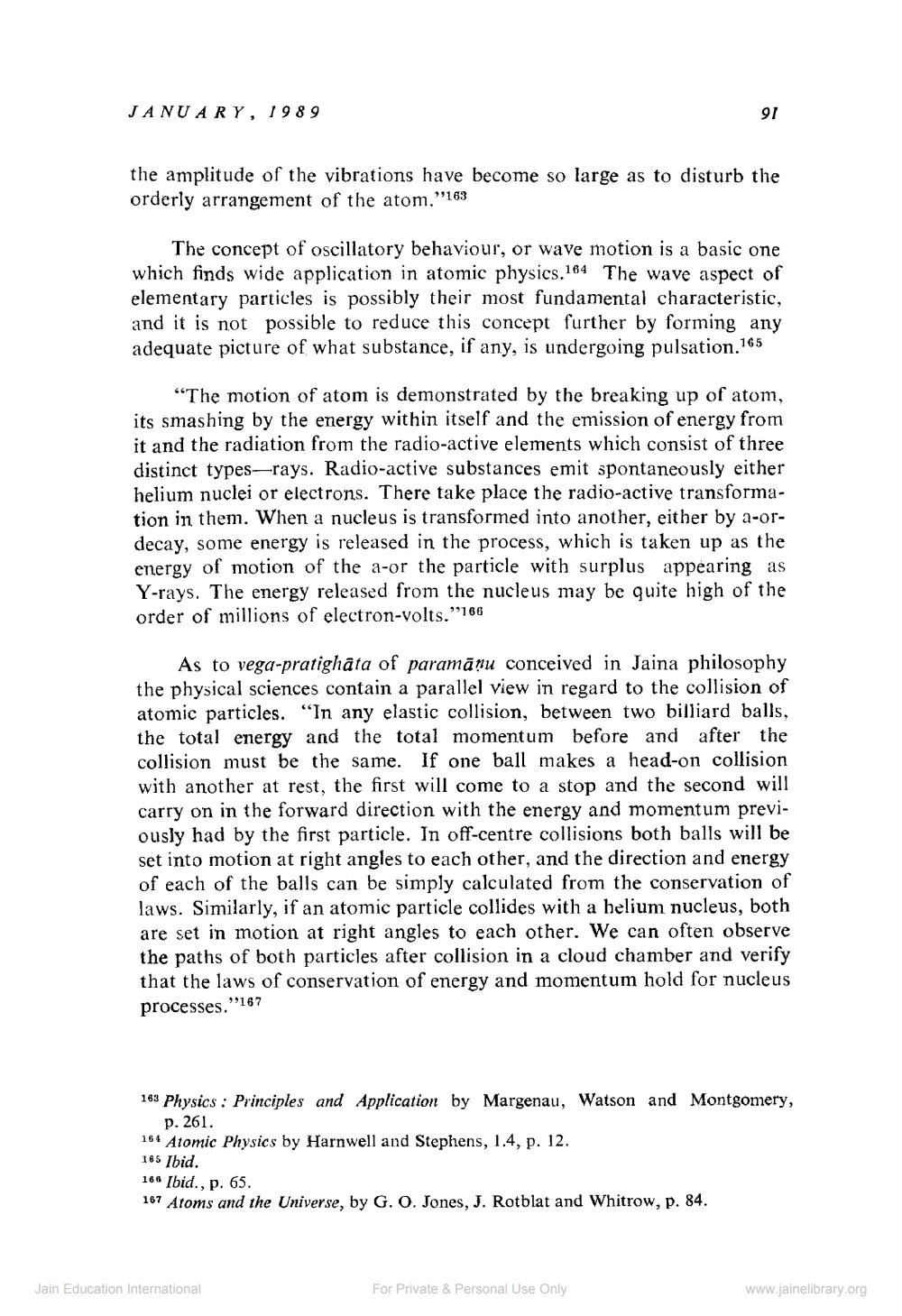________________
JANUARY, 1989
the amplitude of the vibrations have become so large as to disturb the orderly arrangement of the atom."'163
The concept of oscillatory behaviour, or wave motion is a basic one which finds wide application in atomic physics, 184 The wave aspect of elementary particles is possibly their most fundamental characteristic, and it is not possible to reduce this concept further by forming any adequate picture of what substance, if any, is undergoing pulsation.165
"The motion of atom is demonstrated by the breaking up of atom, its smashing by the energy within itself and the emission of energy from it and the radiation from the radio-active elements which consist of three distinct types—rays. Radio-active substances emit spontaneously either helium nuclei or electrons. There take place the radio-active transformation in them. When a nucleus is transformed into another, either by a-ordecay, some energy is released in the process, which is taken up as the energy of motion of the a-or the particle with surplus appearing as Y-rays. The energy released from the nucleus may be quite high of the order of millions of electron-volts."166
As to vega-pratighata of paramāņu conceived in Jaina philosophy the physical sciences contain a parallel view in regard to the collision of atomic particles. "In any elastic collision, between two billiard balls, the total energy and the total momentum before and after the collision must be the same. If one ball makes a head-on collision with another at rest, the first will come to a stop and the second will carry on in the forward direction with the energy and momentum previously had by the first particle. In off-centre collisions both balls will be set into motion at right angles to each other, and the direction and energy of each of the balls can be simply calculated from the conservation of laws. Similarly, if an atomic particle collides with a helium nucleus, both are set in motion at right angles to each other. We can often observe the paths of both particles after collision in a cloud chamber and verify that the laws of conservation of energy and momentum hold for nucleus processes."167
163 Physics : Principles and Application by Margenau, Watson and Montgomery,
p. 261. 164 Atomic Physics by Harnwell and Stephens, 1.4, p. 12. 165 Ibid. 168 Ibid., p. 65. 167 Atoms and the Universe, by G. O. Jones, J. Rotblat and Whitrow, p. 84.
Jain Education International
For Private & Personal Use Only
www.jainelibrary.org




